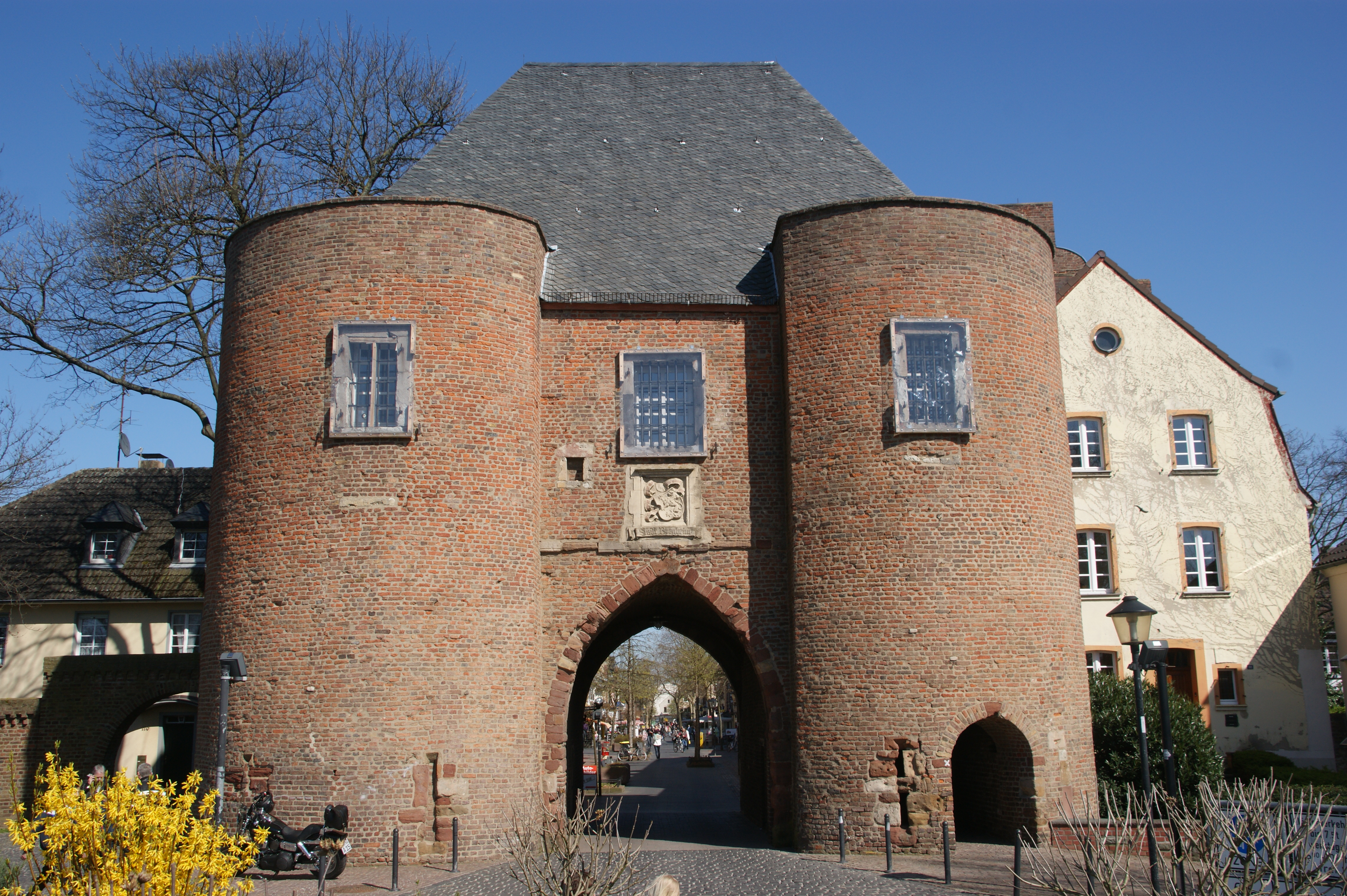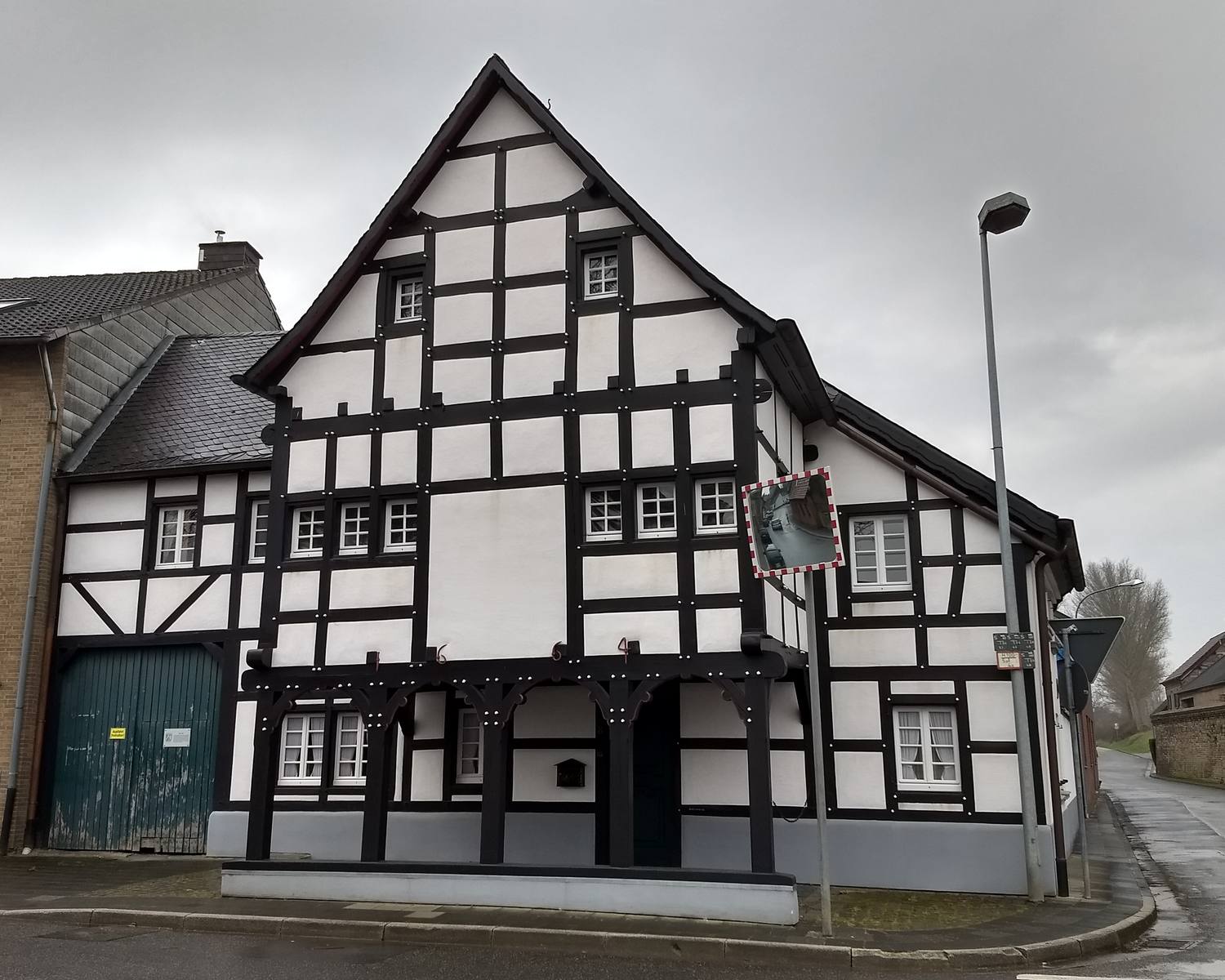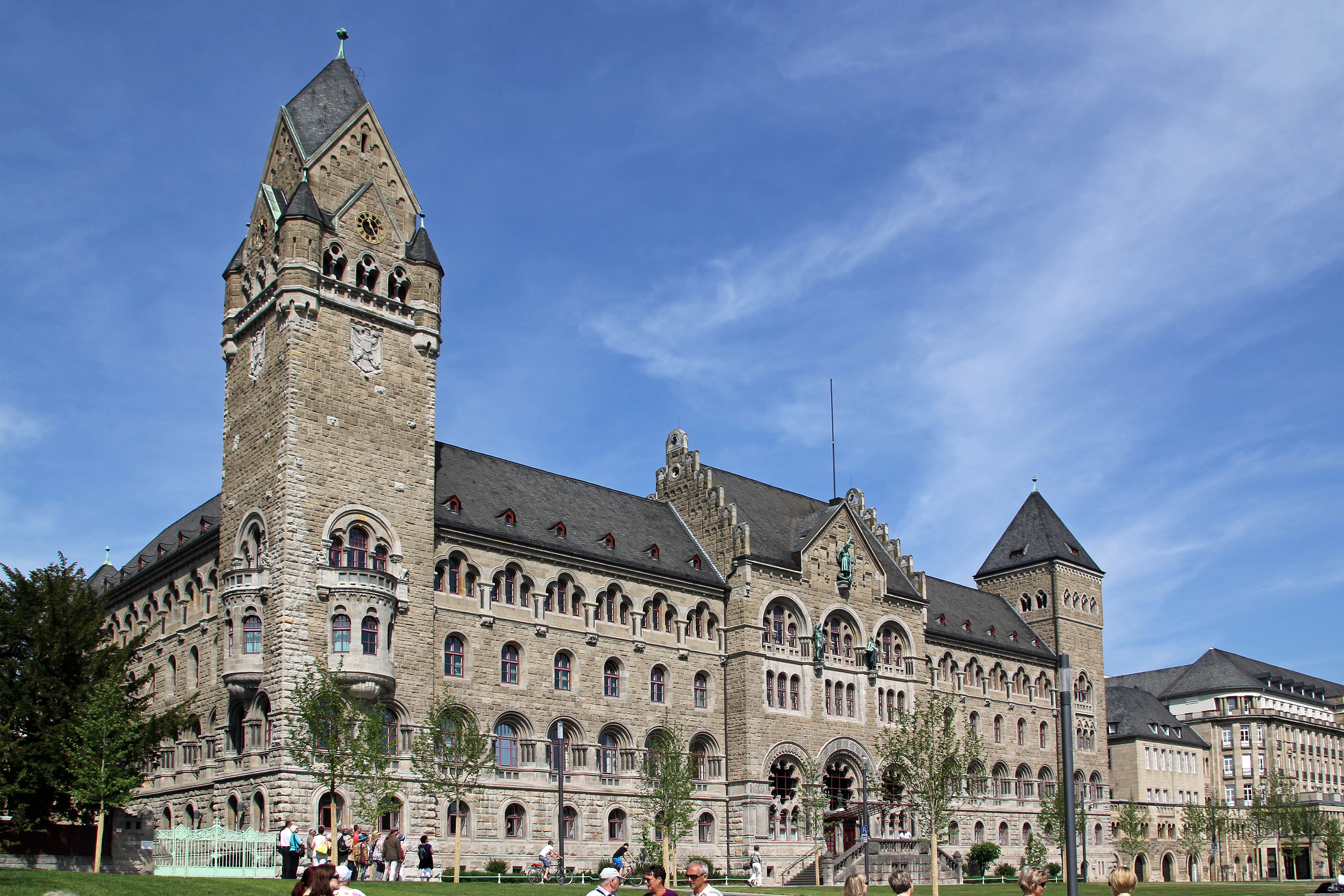|
Rhein-Erft District
The Rhein-Erft-Kreis ( ksh, Rhing-Ärff-Kries) is a district in the west of North Rhine-Westphalia, Germany. Neighboring districts are Neuss, district-free Cologne, Rhein-Sieg, Euskirchen, Düren. History The district in its current borders was created in 1975, when the previous districts Bergheim and Cologne were merged. On 1 November 2003 the district was renamed from ''Erftkreis'' to ''Rhein-Erft-Kreis''. Geography The main river in the district is the Erft, which also gave it the name. The Erft flows through the foothills of the Eifel, on the left side of the Rhine river. The lake Bleibtreusee is located within the district. Towns Coat of arms The coat of arms shows the lion of Jülich in the left half, as most of the area belonged to the duchy of Jülich. The right side shows the Cologne cross, which stands for the former Cologne district. On top the Erft river is depicted; the Prussian Rhine Province had the same symbol in its coat of arms. Gallery Image:Schloss Au ... [...More Info...] [...Related Items...] OR: [Wikipedia] [Google] [Baidu] |
Bergheim, North Rhine-Westphalia
Bergheim ( Ripuarian: ''Berchem'') is a German town, some twenty km west of Cologne and the capital of the Rhein-Erft-Kreis (district). The town's Niederaußem district is one of the most important suppliers for energy from lignites in Europe. Geography Bergheim is about 20 km west of Cologne, approximately 72 metres above sea level. Its highest point is the Glessener Höhe (Glessen Height) at 204 metres. The Erft River flows through Bergheim. The town lies in the Zülpicher Börde, which belongs to the Kölner Bucht. Economically and geographically Bergheim is in the Rhenish lignite coalfield. History There is a burial hill in Niederaußem, dating from about 4000 BC. Romans settled in Bergheim around 50 BC. They constructed the major Roman road, the Via Belgica, that crossed the area where Bergheim is today. Later the Franks took control over the region. In the Middle Ages, Bergheim was granted city rights and later became part of the County of Jülich. In the 19th and 20 ... [...More Info...] [...Related Items...] OR: [Wikipedia] [Google] [Baidu] |
Elsdorf
Elsdorf is a town in the Rhein-Erft-Kreis, in North Rhine-Westphalia, Germany. It is situated approximately 5 km south-west of Bergheim and 30 km west of Cologne. Notable people * Eugen Langen Carl Eugen Langen (9 October 1833 in Cologne – 2 October 1895 in Elsdorf) was a German entrepreneur, engineer and inventor, involved in the development of the petrol engine and the Wuppertal Suspension Railway. In 1857 he worked in his father ... (1833–1895), entrepreneur, engineer and inventor, co-founder of the Elsdorf sugar factory Pfeifer & Langen * Werner Marx (1746–1806), General Vicar of the Archbishop of Cologne References Rhein-Erft-Kreis {{RheinErftKreis-geo-stub ... [...More Info...] [...Related Items...] OR: [Wikipedia] [Google] [Baidu] |
Phantasialand
Phantasialand is a theme park in Brühl, North Rhine-Westphalia, Germany that attracts approximately 2 million visitors annually. The park was opened in 1967 by Gottlieb Löffelhardt and Richard Schmidt. Although starting as a family-oriented park, Phantasialand has also added thrill rides, especially during recent years. Furthermore, following the example of Europa-Park, they have decided to attract business customers beside the regular ones, calling it "Business to Pleasure". Phantasialand is known for its high attention to detail in its theming and introduces new attractions more often compared to other theme parks to compensate for its small area and regularly is voted one of the best parks in the world. Among the park's thrill rides is Taron (the world's fastest multi-launch coaster), Black Mamba (a Bolliger & Mabillard inverted coaster) and a themed Mine Train roller coaster called Colorado Adventure, which runs among some mountains in the park's Wild West section an ... [...More Info...] [...Related Items...] OR: [Wikipedia] [Google] [Baidu] |
Palaces Augustusburg And Falkenlust
A palace is a grand residence, especially a royal residence, or the home of a head of state or some other high-ranking dignitary, such as a bishop or archbishop. The word is derived from the Latin name palātium, for Palatine Hill in Rome which housed the Imperial residences. Most European languages have a version of the term (''palais'', ''palazzo'', ''palacio'', etc.), and many use it for a wider range of buildings than English. In many parts of Europe, the equivalent term is also applied to large private houses in cities, especially of the aristocracy; often the term for a large country house is different. Many historic palaces are now put to other uses such as parliaments, museums, hotels, or office buildings. The word is also sometimes used to describe a lavishly ornate building used for public entertainment or exhibitions such as a movie palace. A palace is distinguished from a castle while the latter clearly is fortified or has the style of a fortification, whereas a pa ... [...More Info...] [...Related Items...] OR: [Wikipedia] [Google] [Baidu] |
Rhine Province
The Rhine Province (german: Rheinprovinz), also known as Rhenish Prussia () or synonymous with the Rhineland (), was the westernmost province of the Kingdom of Prussia and the Free State of Prussia, within the German Reich, from 1822 to 1946. It was created from the provinces of the Lower Rhine and Jülich-Cleves-Berg. Its capital was Koblenz and in 1939 it had 8 million inhabitants. The Province of Hohenzollern was militarily associated with the Oberpräsident of the Rhine Province. The Rhine Province was bounded on the north by the Netherlands, on the east by the Prussian provinces of Westphalia and Hesse-Nassau, and the grand duchy of Hesse-Darmstadt, on the southeast by the Palatinate (a district of the Kingdom of Bavaria), on the south and southwest by Lorraine, and on the west by Luxembourg, Belgium and the Netherlands. The small exclave district of Wetzlar, wedged between the grand duchy states Hesse-Nassau and Hesse-Darmstadt was also part of the Rhine Province. The pr ... [...More Info...] [...Related Items...] OR: [Wikipedia] [Google] [Baidu] |
Duchy Of Jülich
The Duchy of Jülich (german: Herzogtum Jülich; nl, Hertogdom Gulik; french: Duché de Juliers) comprised a state within the Holy Roman Empire from the 11th to the 18th centuries. The duchy lay west of the Rhine river and was bordered by the Electorate of Cologne to the east and the Duchy of Limburg to the west. It had territories on both sides of the river Rur, around its capital Jülich – the former Roman ''Iuliacum'' – in the lower Rhineland. The duchy amalgamated with the County of Berg beyond the Rhine in 1423, and from then on also became known as ''Jülich-Berg''. Later it became part of the United Duchies of Jülich-Cleves-Berg. Its territory lies in present-day Germany (part of North Rhine-Westphalia) and in the present-day Netherlands (part of the Limburg province), its population sharing the same Limburgish dialect. History In the 9th century a certain Matfried was count of Jülich (pagus Juliacensis). The first count in the gau of Jülich in Lower Lorrai ... [...More Info...] [...Related Items...] OR: [Wikipedia] [Google] [Baidu] |
Jülich
Jülich (; in old spellings also known as ''Guelich'' or ''Gülich'', nl, Gulik, french: Juliers, Ripuarian: ''Jöllesch'') is a town in the district of Düren, in the federal state of North Rhine-Westphalia, Germany. As a border region between the competing powers in the Lower Rhine and Meuse areas, the town and the Duchy of Jülich played a historic role from the Middle Ages up to the 17th century. Geography Jülich stands in the Rur valley on the banks of the river Rur. The town is bordered by the town of Linnich in the north, the municipality of Titz in the northeast, the municipality of Niederzier in the southeast, the municipality of Inden in the south, and by the municipality of Aldenhoven in the west. Its maximum size is 13.3 km from east to west and 10.9 km from north to south. The highest point in Jülich is in Bourheim, 110 m above sea level (excepting Sophienhöhe, an extensive artificial mountain made up of overburden from a nearby open-pit lignite ... [...More Info...] [...Related Items...] OR: [Wikipedia] [Google] [Baidu] |
Wesseling
Wesseling () is an industrial German city on the Rhine bordering Cologne city on the south. With three chemical plants and a petroleum refinery within its city limits, it has an important place in the international petrochemical industry. History and etymology The find of Roman consecration altars, the excavation of a Roman country house and Franconian burial grounds are early evidence of the settlement of the place. Wesseling originates from the Latin "Wasliacum" which means "Village of Waslica". The story that Wesseling originates from "changing of the rope" (german: Cologne-bred:Wechsel de Ling) from when Rhine boats were pulled by horses is something like an urban legend because the name Wesseling is centuries older than the horse-changing station, which was located in Wesseling in the 18th century. Around 1700 there was a team changing point for towing boats in Wesseling. Until industrialization, the place between Cologne and Bonn remained rather insignificant. Only in 1793 ... [...More Info...] [...Related Items...] OR: [Wikipedia] [Google] [Baidu] |
Pulheim
Pulheim (; Ripuarian language, Ripuarian: ''Pullem'') is a town in the Rhein-Erft-Kreis, North Rhine-Westphalia, Germany. Since the 1920s, a large substation of the ''Rheinisch-Westfälisches Elektrizitätswerk AG'' (RWE) is located at Pulheim. It is the end of the north south powerline and a large control center for the power grid of the RWE. In the communal reform of 1975, several previously independent municipalities were added to the municipality Pulheim, which received city rights in 1981. Pulheim consists of 12 quarters (''Stadtteile''), including Brauweiler, Geyen and Stommeln. Education The following schools are in Pulheim: *Dietrich-Bonhoeffer Primary School, Pulheim *Catholic Primary School Barbara School, Pulheim *Community Primary School “Am Buschweg”, formerly known as “Am Wäldchen”, Pulheim *Richeza Community Primary School, Pulheim-Brauweiler *Wolfhelm School (primary school), Pulheim-Dansweiler *Community Primary School Sinnersdorf, Pulheim-Sinnersdorf *C ... [...More Info...] [...Related Items...] OR: [Wikipedia] [Google] [Baidu] |
Kerpen
Kerpen (; Ripuarian: ''Kerpe'') is the most populated town in the Rhein-Erft-Kreis (North Rhine-Westphalia, Germany). It is located about 20 kilometres southwest from Cologne. Division of the town The town of Kerpen was created in 1975, when the previously independent municipalities Balkhausen, Blatzheim, Brüggen, Buir, Horrem, Kerpen, Manheim, Mödrath, Sindorf and Türnich were merged. Monuments * Burg Bergerhausen * Burg Loersfeld * Schloss Türnich Notable people * Adolph Kolping (1813–1865), Catholic priest and social reformer * Wolfgang von Trips (1928–1961), Formula One motor racing driver * Karlheinz Stockhausen (1928–2007), pioneer of electronic music composition * Franz-Peter Hofmeister, Olympic medalist in the 4 × 400 m relay * Michael Schumacher, 7 time Formula One world champion * Ralf Schumacher, brother of Michael, both have emulated von Trips in achieving success in Formula One * Patrice Bart-Williams is an acclaimed reggae artist Education In 200 ... [...More Info...] [...Related Items...] OR: [Wikipedia] [Google] [Baidu] |
Hürth
Hürth is a town in the Rhein-Erft-Kreis, North Rhine-Westphalia, Germany. Hürth shares borders with the city of Cologne and is about 6 km to the southwest of Cologne city centre, at the northeastern slope of the natural preserve Kottenforst-Ville. The town consists of thirteen districts, once independent villages, and is distributed over a relatively large area. The municipal area is interspersed with lakes and stretches of forest. In former times, the Eifel Aqueduct, a Roman aqueduct which supplied the city of Cologne with drinking water, went through Hürth. Remnants of various aqueducts can still be found underground. It is also famous as the birthplace of Michael Schumacher. Geography Hürth is situated about 6 km to the southwest of Cologne city centre, at the northeastern slope of the Kottenforst-Ville nature reserve. The town, consisting of thirteen formerly independent villages, is essentially made up of numerous subdivisions and commercial centres d ... [...More Info...] [...Related Items...] OR: [Wikipedia] [Google] [Baidu] |







